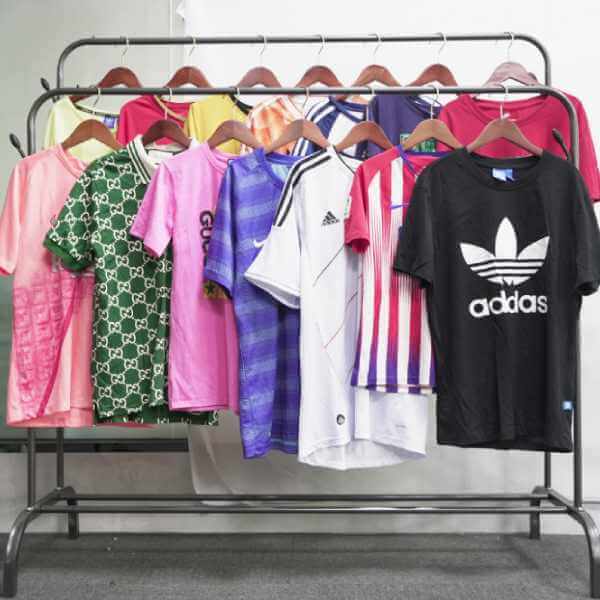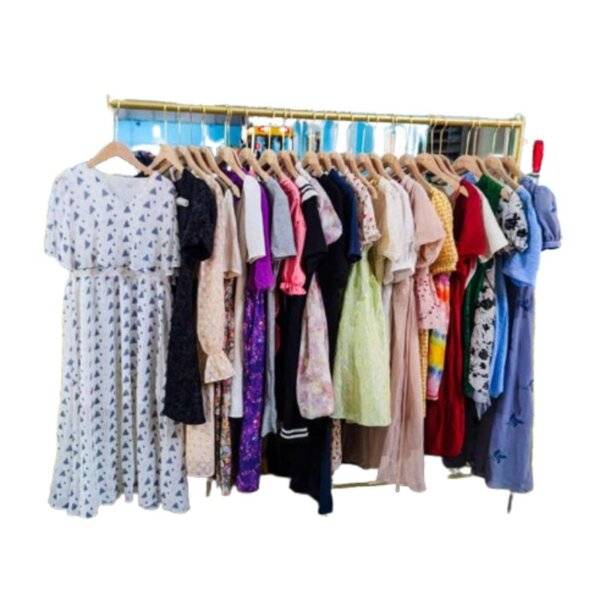Imagine this: a massive, tightly packed bale of clothing lands on your doorstep. Inside, you dream of finding treasures—vintage band tees, perfectly worn-in Levi’s jeans, and maybe even a hidden designer jacket worth hundreds. This is the exciting promise of buying Branded second-hand clothes wholesale. But for many beginners, the reality can be a nightmare. You cut the bale open only to find a pile of stained, torn, and unsellable rags, and the money you invested is gone in an instant. This guide is your map through that potential minefield. We’ll walk you through the four biggest traps nearly every newcomer faces: the Mindset Trap, the Supplier Trap, the Product Trap, the Money Trap, and the ” What Now Trap”. By the end, you won’t need luck; you’ll have a strategy to protect your money and start buying wholesale clothing the smart way.

The Mindset Trap: Stop Gambling, Start Strategizing
The first and biggest trap has nothing to do with the clothes themselves—it’s all in your head. Many beginners approach their first wholesale purchase like buying a lottery ticket. They pick a supplier, send their money, and nervously hope they hit the jackpot with a bale full of valuable items. This is the fastest way to lose money, because hope is not a business strategy.
Instead, you need to stop thinking like a gambler and start thinking like a business owner. Here’s how:
Know Your Customer First. Before you even look at a supplier’s website, ask yourself: Who am I selling to? Selling to college students who want trendy Y2K fashion is completely different from selling to outdoor enthusiasts who want durable brands like Patagonia and The North Face. You cannot sell everything to everyone. Knowing your customer tells you exactly what kind of “treasure” you should be looking for.
Do Your Homework. Spend a few hours on reseller sites like Depop, Poshmark, or eBay. Don’t just browse—research. What specific brands and styles are selling right now? What are the average prices for those items in used condition? This information is free, and it’s priceless for helping you decide if a potential bale is worth the investment.
Set a “Test Budget.” Decide on an amount of money—whether it’s $200 or $500—that you are fully prepared to lose on your first one or two purchases. Think of this as your “education fee.” This simple step takes the fear and emotion out of the process. If the bale is a total dud, it’s not a catastrophe; it’s a lesson you paid for. If it’s great, you have a profitable starting point.
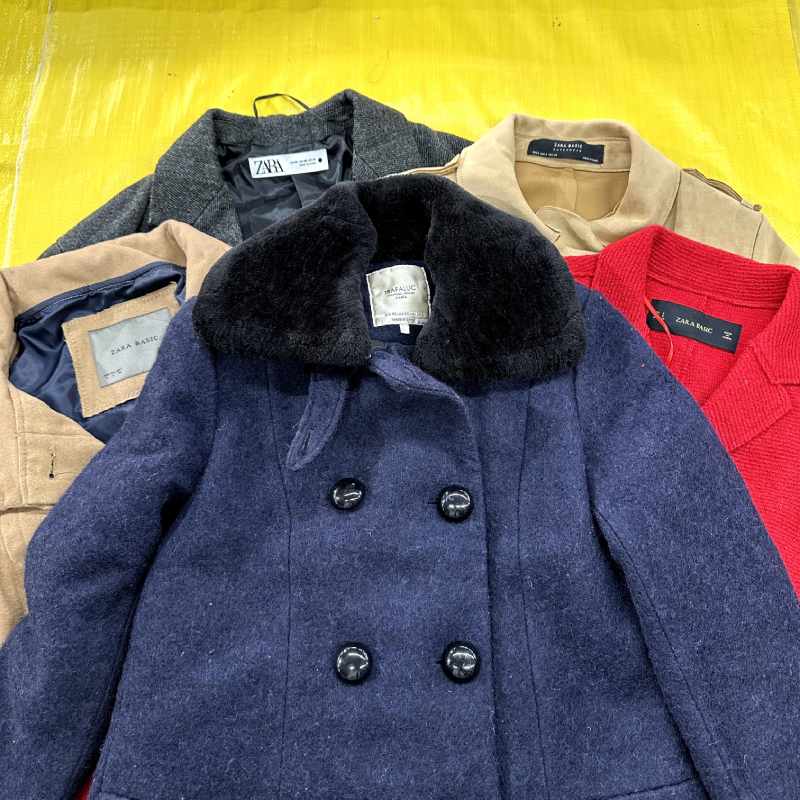
The Supplier Trap: Falling for a Pretty Website
Once you have the right mindset, your next big challenge is finding a trustworthy Branded second-hand clothes wholesale supplier. This is where many resellers get stuck. The supplier trap is falling for a company that has a beautiful, professional-looking website but sells low-quality, disappointing branded second hand clothes Wholesale. In today’s world, anyone can build a slick website and use perfect “sample photos” of amazing clothes. You absolutely cannot trust these pictures alone.
Instead of being just a customer, you need to become a detective. Here are the steps to properly investigate a potential supplier before you send them a single dollar.
Look for Transparency. Honest suppliers aren’t afraid to show you the reality of their business, which can be messy. Shady suppliers only show you perfection, which is a major warning sign in the world of used clothing.
Red Flag: A second hand clothes wholesale supplier’s website or social media only shows perfectly folded, brand-new-looking clothes. Real second-hand wholesale operations are filled with giant bags, bins, and piles of clothing. If you can’t find any pictures or videos of their actual warehouse, be very suspicious.
Test Their Communication. Before you commit to buying, send them an email or a direct message with a few specific questions (we’ll cover the exact questions in the next section). Their response will tell you a lot about their business. Are they patient and happy to answer your questions in detail? Or are their answers short, vague, or pushy, trying to rush you into making a sale? Never feel pressured to buy.
Follow the Golden Rule: Start Small. This is the most important rule of all. No matter how great a supplier seems and how many good reviews they have, never place a large order for your first time. Your first order is a test. Find a supplier that has a low minimum order quantity (MOQ) and buy the smallest amount you can. Yes, the shipping might be more expensive per item, but paying a little extra for a small test run can save you from losing thousands on a massive, low-quality bale.
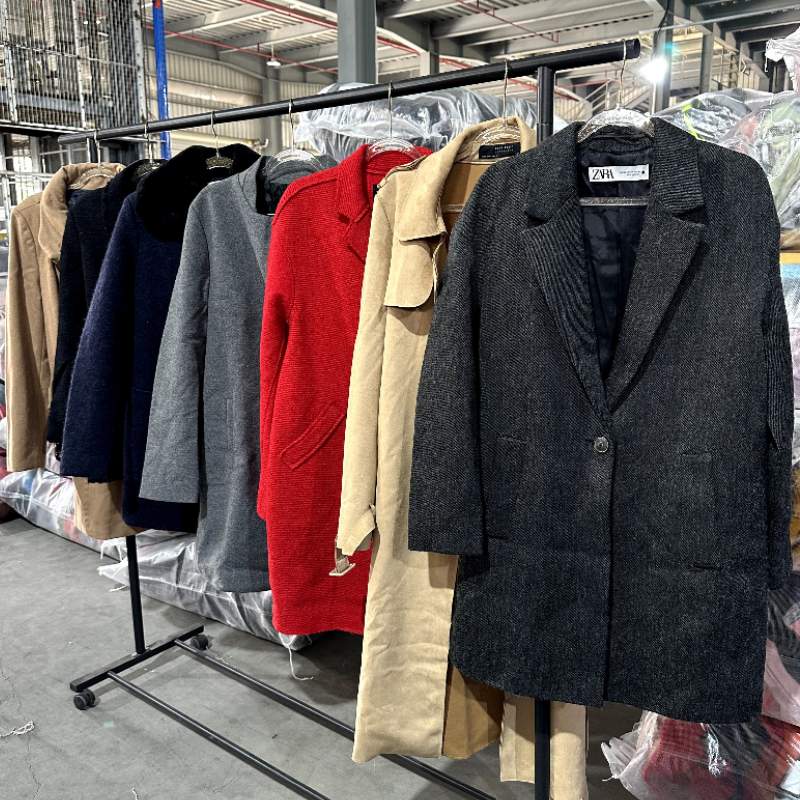
The Product Trap: Not Knowing What You're Actually Buying
So you’ve got the right mindset and you’ve found a supplier. The next step is understanding the product itself—a critical part of any good guide to buying Branded second-hand clothes wholesale. The biggest trap here is getting tricked by fancy words and not asking the tough questions This trap is about getting tricked by fancy words and not asking the tough questions. Many new buyers see terms like “Premium Grade” or “A-Grade” and assume the clothes will be perfect, only to open their bale and find mostly B-grade items, or worse. These terms have no official standard, and what one supplier calls “A-Grade,” another might call “B-Grade.”
To avoid this product trap, you need to learn the secret language of the wholesale second-hand clothing world and always come prepared with a detailed checklist of questions.
Decoding the Jargon:
- Cream/A++ Grade: This is supposed to be the best of the best. Think like-new condition, highly sought-after brands, and absolutely no visible defects. It’s rare and expensive.
- A-Grade: This is generally good condition, with minor signs of wear and tear, and only a small percentage (maybe 5-10%) of items that might be unsellable. These are your bread-and-butter items.
- B-Grade: Expect visible wear, some fixable issues like small stains, missing buttons, or tiny holes. Your “waste rate” (unsellable items) will be higher, maybe 20-30%. You’ll need to put in more work, but the initial cost is lower.
Crucial Point: Remember, these terms are just guidelines. Every supplier has their own definition. That’s why your questions are so important.
Your Pre-Order Question Checklist:
- “Can you give me an approximate percentage of men’s vs. women’s items?” If you mostly sell women’s fashion, you don’t want a bale that’s 80% men’s clothes.
- “Is this bale sorted by season, or is it a mixed season bale?” Getting a huge batch of winter coats in July (unless you plan to store them) might not be ideal for immediate sales.
- “What is your average ‘waste percentage’ for this specific grade and type of bale?” An honest supplier will give you a realistic number, for example, “For A-grade, expect about 5-10% unsellable.” If they say “0% waste,” that’s a huge red flag.
- “Can you list 5-10 brands typically found in this mix, not just the best ones?” This helps you understand the overall quality and style of the brands in the bale, not just the aspirational “cream” pieces they highlight.
By asking these specific questions, you move beyond blind faith and gather real information, helping you predict what your Branded Second Hand Clothes Wholesale purchase will actually contain.
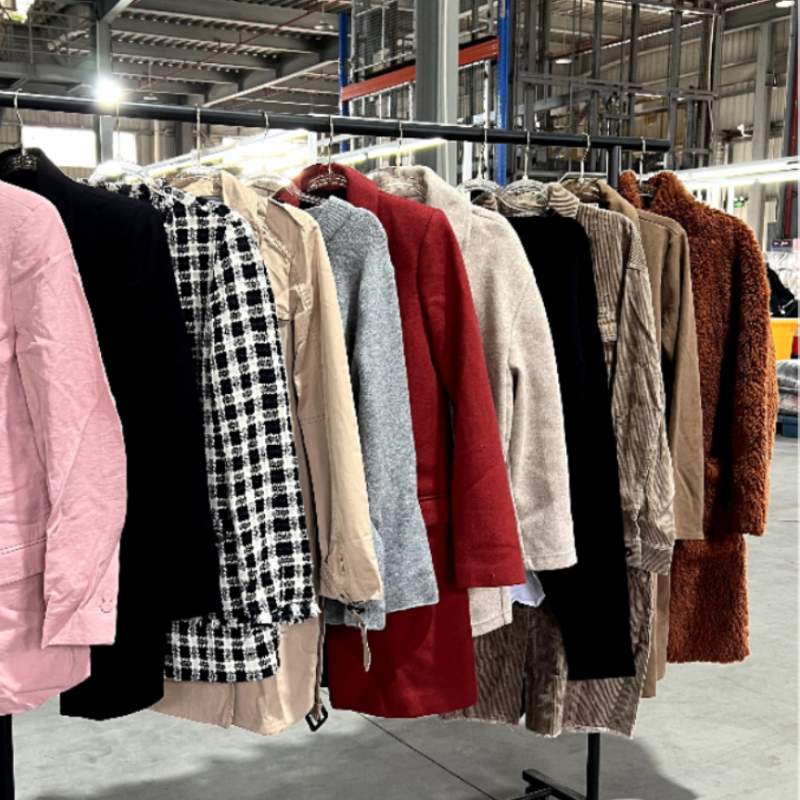
The Money Trap: Forgetting the Hidden Costs
The final trap is the one that quietly drains your profits: underestimating the total cost. You might find a Branded Second Hand Clothes Wholesale bale advertised at what seems like a great price per pound and get excited about your potential profit margin. However, the price listed by used clothing suppliers is almost never your final cost. Forgetting about the hidden fees can turn a profitable venture into a break-even headache, or worse, a net loss for your reselling business.
To avoid the money trap, you must learn to calculate your “True Landed Cost.” This is the total amount of money it takes to get one single item from the supplier’s warehouse into your online store, ready to be sold.
- Shipping Fees: This is the most common surprise for beginners. A heavy bale of clothing can be extremely expensive to ship, sometimes costing nearly as much as the clothes themselves. Always get a firm, final shipping quote before you pay for your order.
- Import Taxes and Customs Fees: If you are buying from a supplier in another country, you will almost certainly have to pay customs and import fees. These fees are not optional and can add a significant percentage to your total cost. A good supplier should be able to give you an estimate, but you should also do your own research to be prepared.
- “Sweat Equity” and Processing Costs: Your time is not free, and neither are your supplies. You must factor in the hidden costs of running your business: the hours you will spend sorting, washing, steaming, and mending; the cost of laundry detergent, shipping boxes, and thank-you cards; and the time it takes to photograph and list each item.The True Cost of Waste: Let’s look at a simple math example to see why the “cheapest” bale isn’t always the best deal.
- Bale A costs $2 per pound, but has a 40% waste rate (unsellable items). The true cost for the clothes you can actually sell is much higher—around $3.33 per pound.
- Bale B costs $3 per pound, but is higher quality with only a 10% waste rate. The true cost for its sellable clothes is also around $3.33 per pound.
In this scenario, both bales have the same true cost, but Bale B will save you a massive amount of time and effort in sorting through junk. By calculating these hidden costs, you get a realistic picture of your investment and can make a much smarter decision for the health of your reselling business.
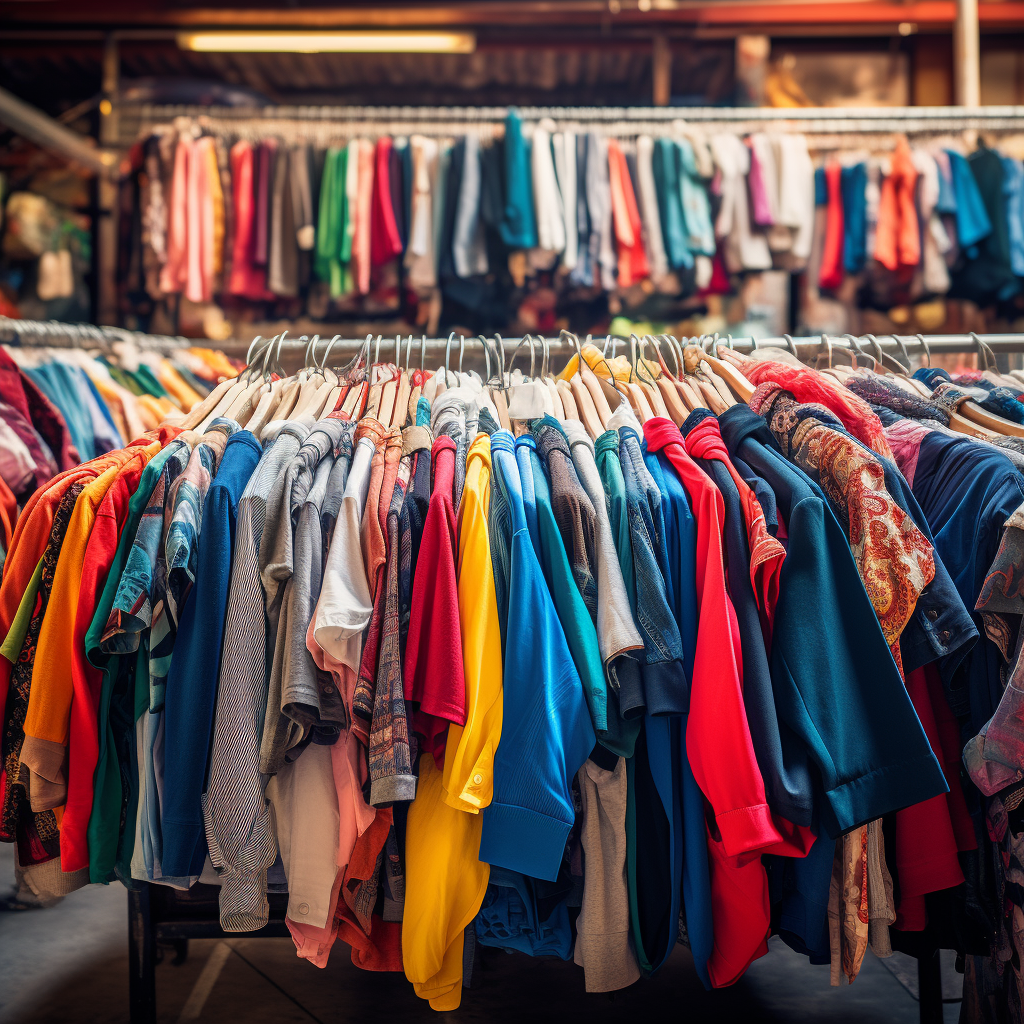
The "What Now?" Trap: Handling a Disappointing Bale
Even after all your research and careful planning, it can happen: you open a bale and your heart sinks. It’s simply not what you expected. The final trap to avoid is handling this situation badly, either by panicking or by giving up. What you do next is critical for your long-term success.
First, don’t get angry—get organized. Before you start sorting, take clear, well-lit photos and videos of the items as you unpack them. Document everything that is wrong: show the stains, the holes, the items that don’t match the description. This is your evidence.
Next, contact your branded second hands clothes wholesale supplier. Approach them calmly and professionally. Do not send an angry, accusatory email. Instead, write something like, “Hello, I’ve just received my order [Order Number]. I’ve documented some quality issues that are different from the grade I purchased. Can we discuss a potential solution? I’ve attached photos for your reference.” A reputable supplier values their reputation and may offer you a partial credit or a discount on your next order. A scammer will likely ignore you, which is a clear sign to never order from them again.
Finally, focus on salvaging what you can. Can some items be repaired? Can you bundle the lower-quality items into cheap “mystery boxes”? Even selling the items as scrap fabric can recoup a small part of your cost. Every disappointing bale is a lesson. Analyze what went wrong and use that knowledge to make an even smarter choice next time.

Conclusion: Your Path to Smart Sourcing
Navigating the world of Branded Second Hand Clothes Wholesale can feel intimidating, but as you can see, avoiding the major pitfalls comes down to a few key ideas. Always approach it with a business strategy, not a gambler’s hope. Do your homework and investigate your suppliers like a detective. Understand what you’re buying by asking specific, detailed questions. And finally, always calculate the hidden costs to understand your true investment.
The risks in this business are real, but they are manageable. By following these steps, you are no longer just hoping to get lucky; you are building a strategy for success. You are replacing chance with choice, giving your reselling business the best possible foundation to grow and thrive. Now you’re ready to start your treasure hunt the smart way.


